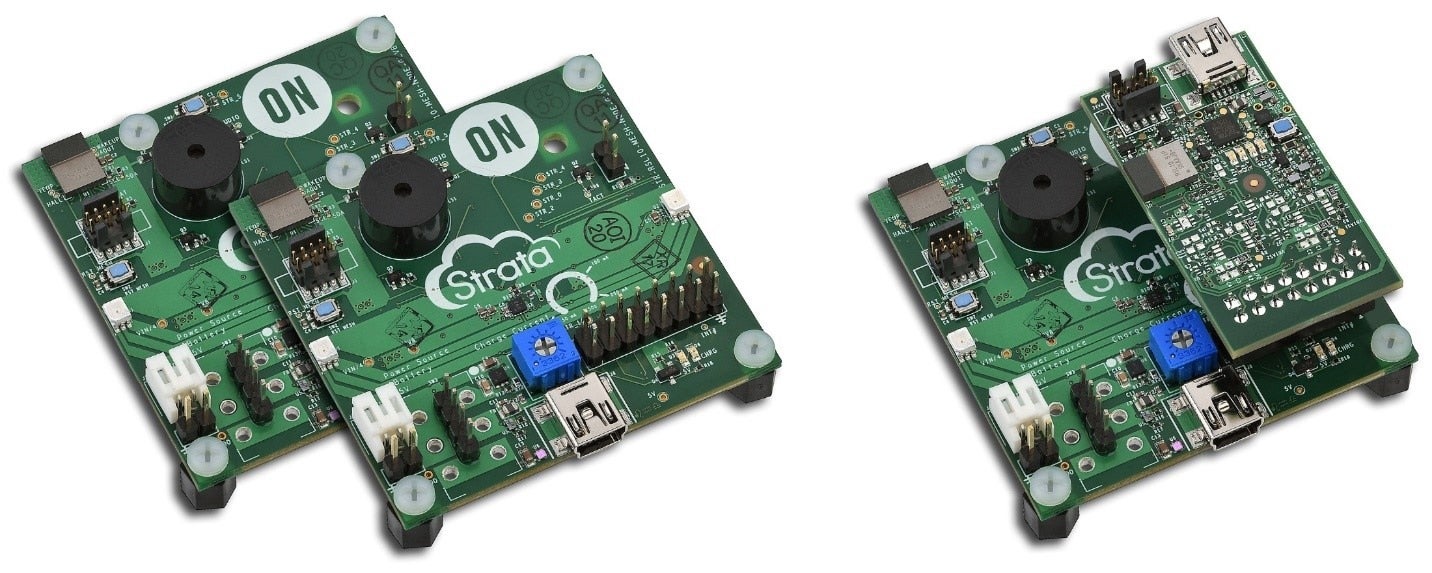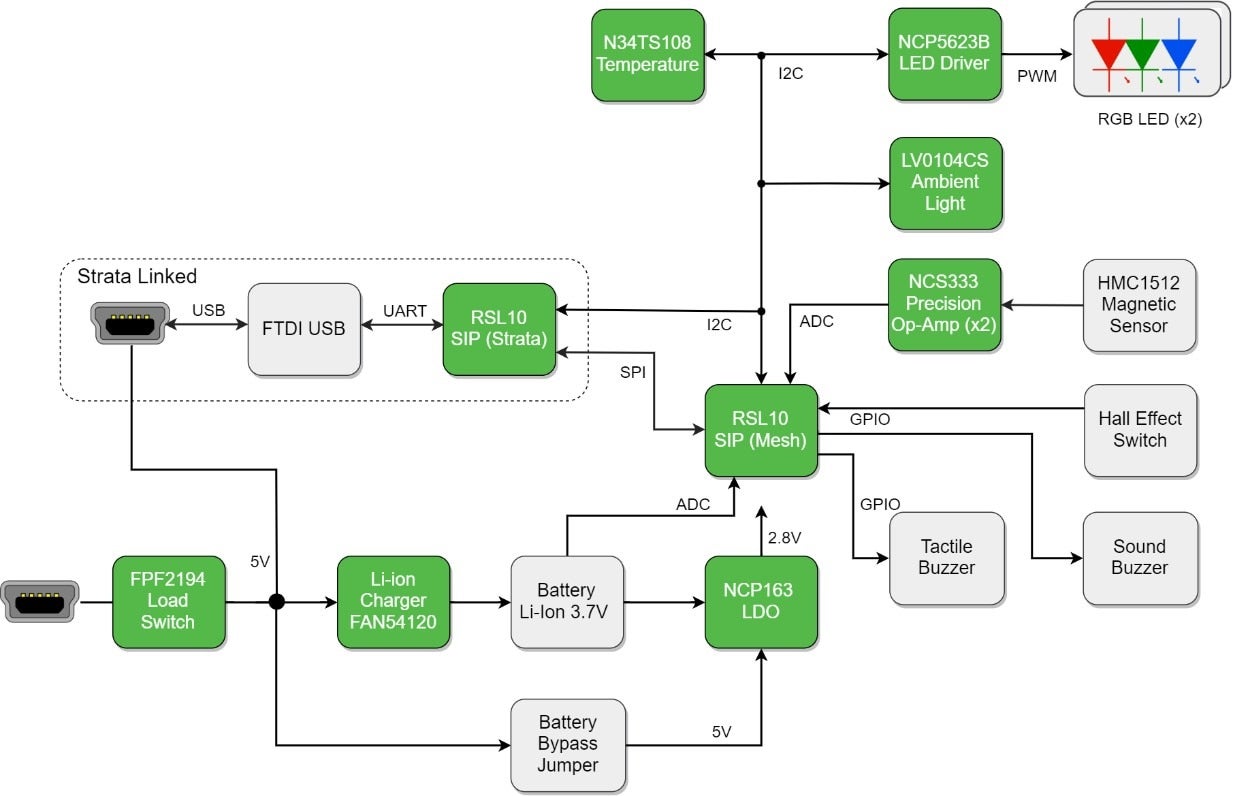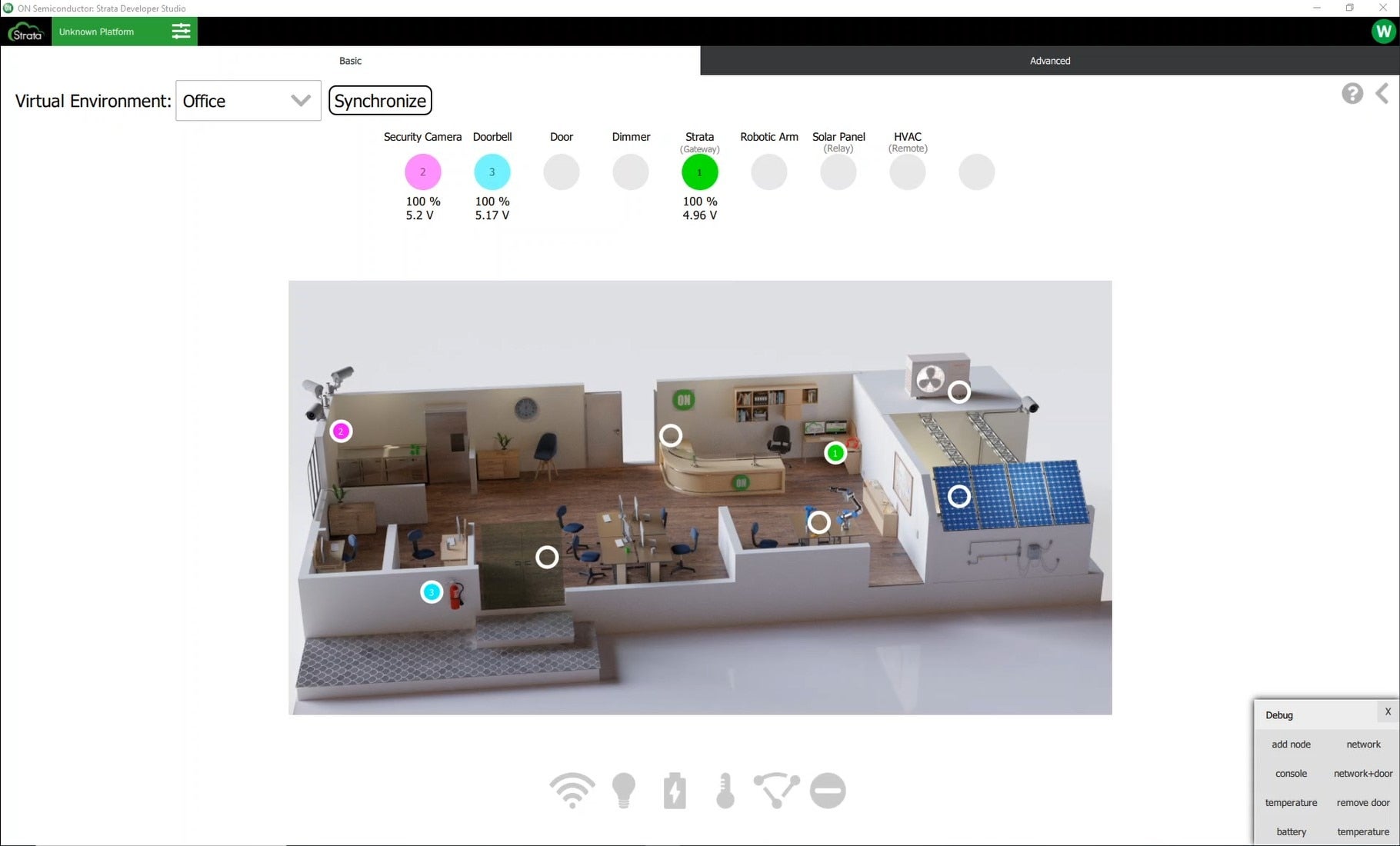Unlike traditional point-to-point (P2P) Bluetooth connections, Bluetooth® Low Energy mesh networks implement a many-to-many topology and use managed flooding to send data. As a result, they don’t require any centralized routing or routing tables like Ethernet networks. Bluetooth Low Energy Mesh specifications also offer built-in security with encryption at multiple layers, so nodes in the network can relay traffic without needing to be aware of the contents of any messages. The nodes can simply pass them along while potential eavesdroppers on the network only see encrypted packets, a significant benefit for network security while preserving design simplicity. A properly placed Bluetooth Low Energy Mesh network can span larger distances than traditional P2P Bluetooth communications as nodes can perform message passing by relaying packets to a destination node that is out of range of the transmitting node. This enables a variety of IoT applications, including connected lighting and remote sensor monitoring, previously out of range for Bluetooth technology.
RSL10 Mesh Nodes Strata Gateway
Figure 1. RSL10 Mesh Platform Kit
The RSL10 Mesh Platform is a versatile, easy to configure it for developing mesh networking applications based on the RSL10 Bluetooth 5 radio. The platform includes two RSL10-based Mesh Nodes and a Strata Gateway, which enables connectivity to the Strata Developer Studio™ and acts as the network provisioner so that nodes can be securely added and removed.
Alongside the RSL10 System-in-Package (RSL10 SIP), the Mesh Nodes feature multiple environmental sensors for monitoring temperature and ambient light and magnetic field detection. The nodes also include a 2.3 kHz tone indicator, a connector for vibration buzzers and light dimming and alarm capabilities.
Figure 2. RSL10 Mesh Node Block Diagram
The Strata Gateway supports seamless and secure connectivity to the Strata Developer Studio™. This cloud-connected software enables provisioning of additional mesh networks and firmware-over-the-air (FOTA) updates. Using the virtual workspaces for common mesh networking examples, including a smart office and smart home, developers can access sensor data and trigger settings like signal strength, ambient light, battery, temperature and node connections for every node within the network in the Strata basic view. An advanced view allows the user to view several code examples.
The RSL10 Mesh Platform enables manufacturers to realize mesh networking applications in an intuitive way by allowing them to experience and develop different real-world use cases before digging deeper into the advanced examples.
Figure 3. Strata Developer Studio
Developers can also customize their own application using the source code for the RSL10 Mesh Platform provided inside the RSL10 Integrated Development Environment (IDE) or any of the examples available in the Bluetooth SIG-compliant RSL10 Mesh Package.
Figure 4. RSL10 Mesh App
Also provided is the RSL10 Mesh app, available on GooglePlay™. The Mesh app acts as a provisioner to easily deploy new RSL10-based devices in a mesh network and allows control of individual nodes or groups of nodes using Generic OnOff and Light Lightness models.
Learn more about how to get started with the RSL10 Mesh Platform today and check out our video "Unboxing the RSL10 mesh platform."
Subscribe to our blog and follow us on social media to receive the latest updates on our technologies, solutions and company news!
Twitter | Facebook | LinkedIn | Instagram | YouTube




